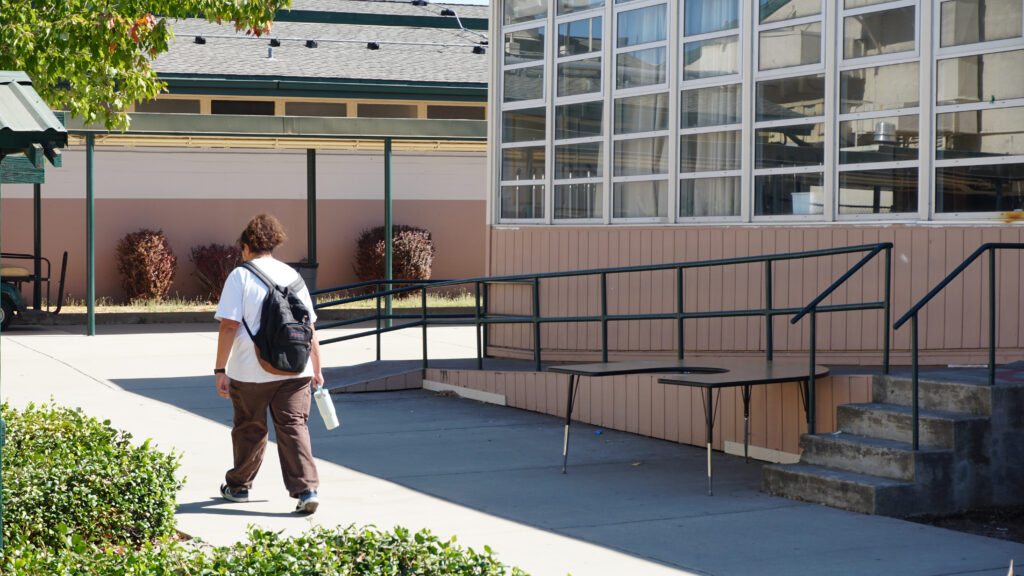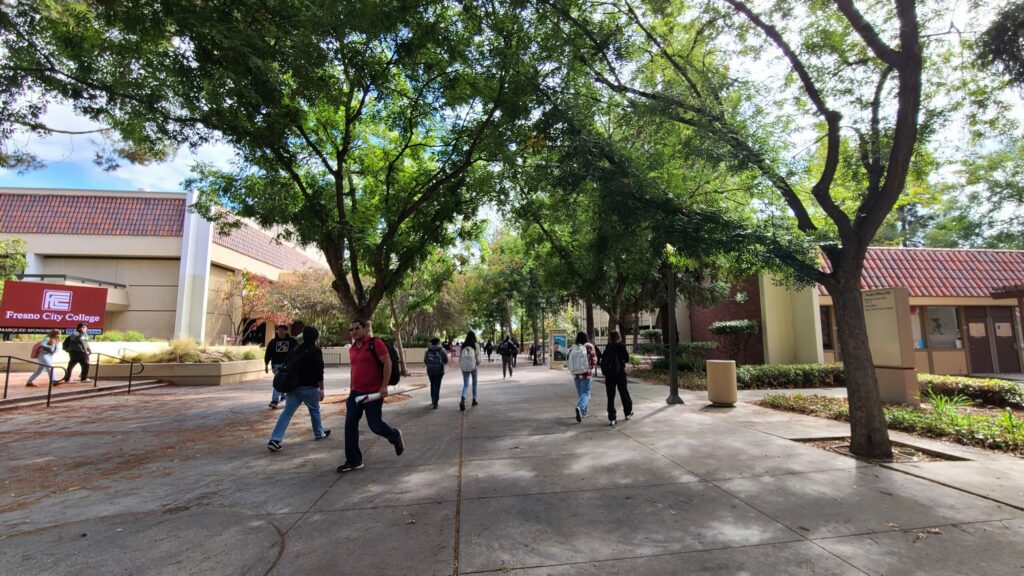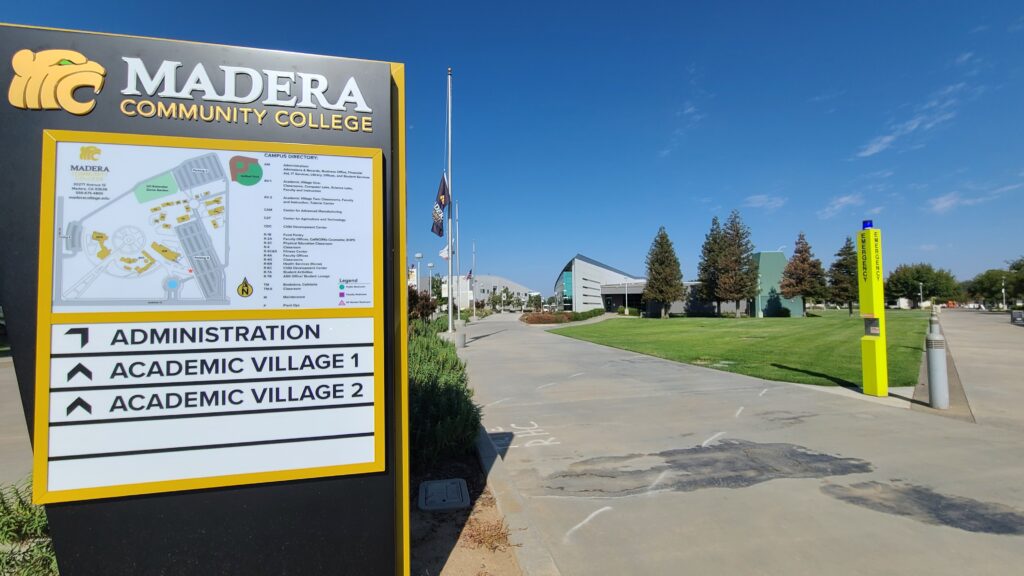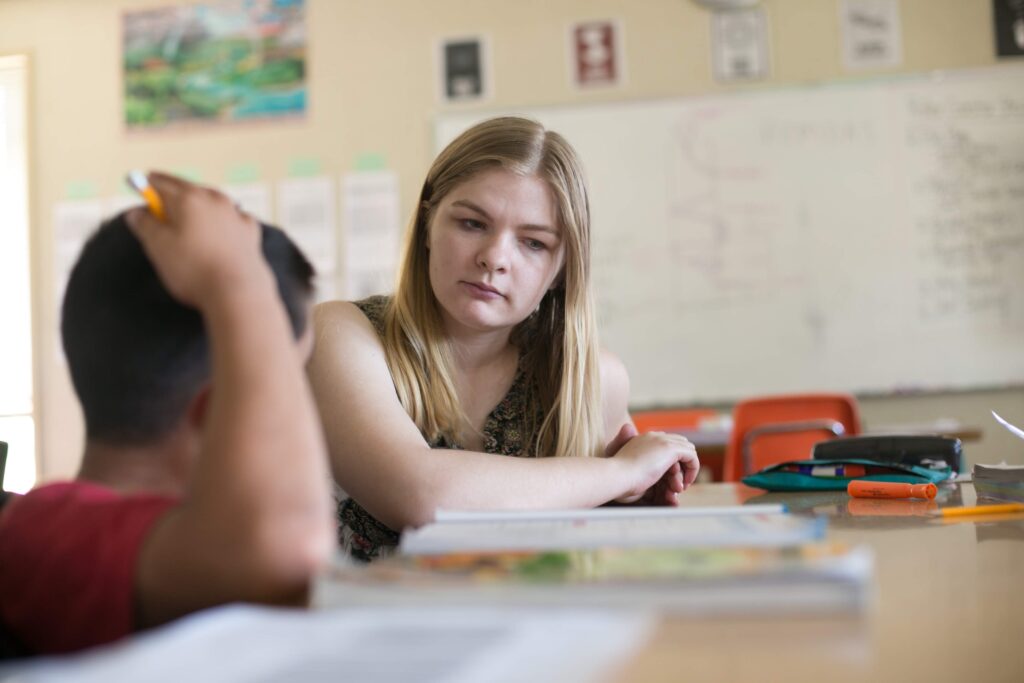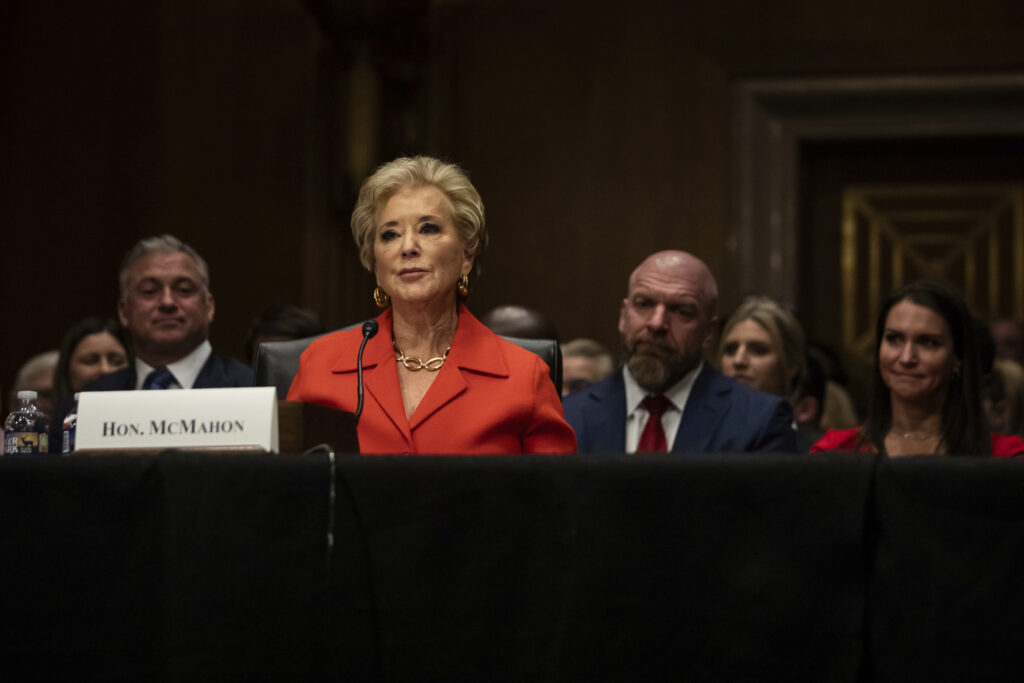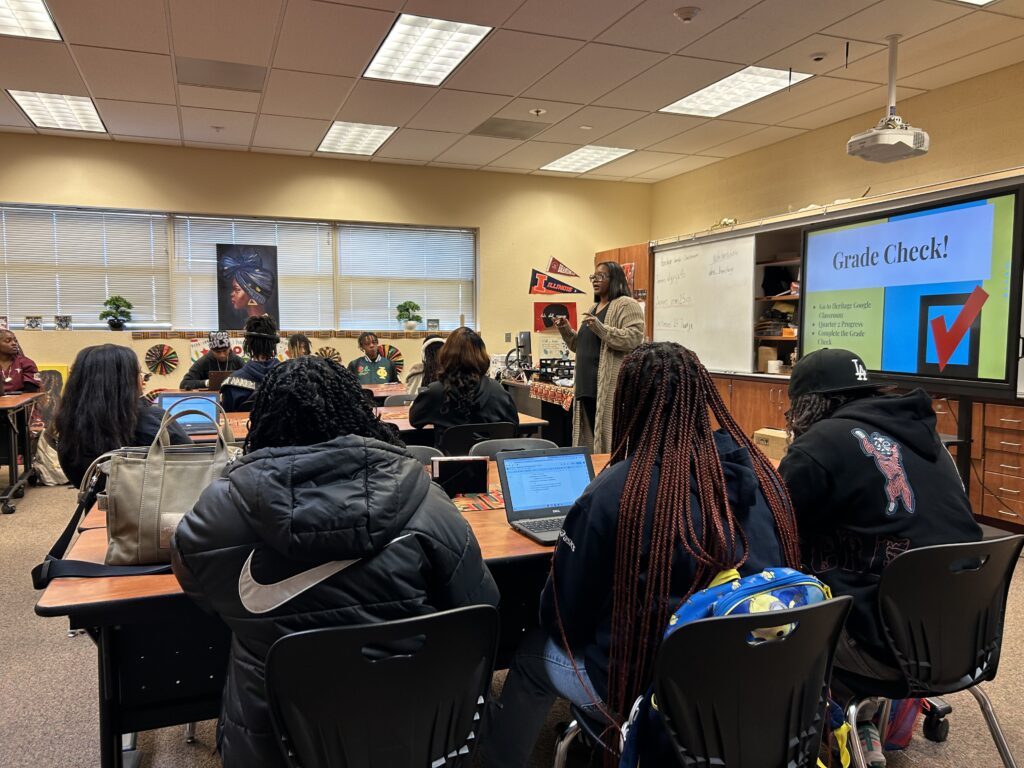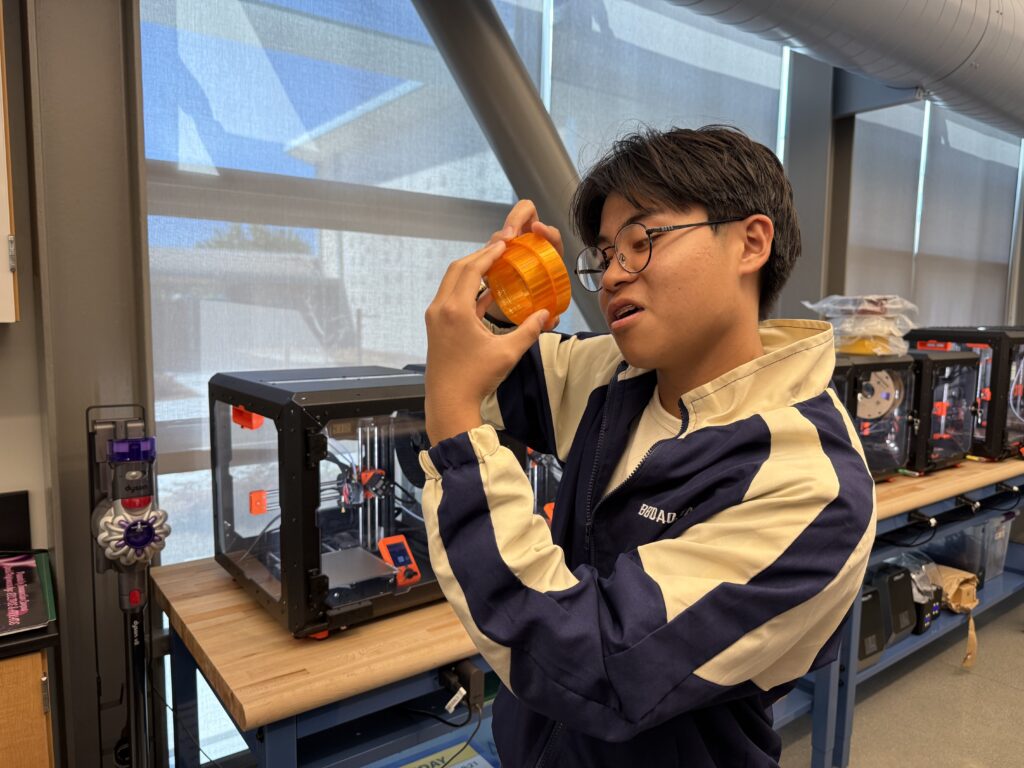
Vernon B. Harper Jr.
Courtesy of California State University, Bakersfield
Vernon B. Harper Jr. is scratching the word “interim” from his nameplate at California State University, Bakersfield.
Harper, who has served as the university’s interim president since the end of 2023, was named CSUB’s permanent president on Wednesday, the second day of a Cal State board of trustees meeting dominated by discussions about the financial pressures facing the university system. The system is projecting a $400 million to $800 million budget gap in 2025-26 as state leaders signal their intention to reduce funding for CSU.
CSU Bakersfield has been able to prevent students from feeling the effects of a reduced budget, Harper said, buoyed by growing enrollment this school year. His focus is on making what he calls a “pivot towards the community” — expanding programs to boost the number of Kern County high school graduates and community college transfer students who enroll at CSUB. The Central Valley is growing rapidly but has lower college attainment than the rest of the state.
Harper envisions the university taking a more active role alongside local K-12 schools to increase the number of students who meet A-G requirements, the coursework that makes students eligible to start college at a Cal State or University of California campus. Only 36% of Kern County high school graduates completed such coursework in the 2022-23 school year, according to state education data, compared with 52% of high school graduates statewide.
“That’s the real transition that the institution is making. It is to accept those problems as our own,” Harper said. “We’re partnering with our K-12 providers and making sure that we’re doing absolutely everything we can to raise that statistic. We’re not just going to sit back passively and watch our community go in a direction that we don’t want it to go.”
One example of the work Harper hopes to get done: CSUB’s teacher education program is forming a task force with the Kern County Superintendent of Schools Office and the Kern High School District in a bid to increase the number of students who are A-G qualified, he said.
The campus is also experimenting with ways to get local students thinking about college even before they leave middle school. It recently started a pilot program with four middle schools and four high schools in which students as young as 12 will receive notices that they are guaranteed admission to CSUB so long as they meet A-G requirements.
“We’ve seen that with young people, especially in under-resourced populations, their vision is truncated by their circumstance,” Harper said. “Whatever we can do, we have a responsibility to do, to extend that vision as far as it can go.”
The past decade has seen rising graduation rates at CSUB. Among first-time, full-time freshmen who entered Cal State Bakersfield in 2017, 49% graduated in six years, an almost 10 percentage-point increase from 2007. But the school has not caught up to some of its Cal State peers. Systemwide, the six-year graduation rate for the same group of students in the fall 2017 cohort was roughly 62%.
Harper said that the intervention that seems to have the most impact on improving graduation rates is pairing students with an academic adviser who works with them throughout their time at CSUB, guiding them through unforeseen challenges, like switching into a course that fits the student’s work schedule.
“As much as we can invest in that activity, the more positive outcomes that we (see),” he said.
The university is also experiencing some of the same longstanding graduation equity gaps that exist across California higher education. The six-year graduation rate among Black students who entered CSUB as freshmen in the fall 2017 cohort was 40%, lagging Asian, Latino and white students.
Harper has backed several CSUB initiatives to attract and retain Black students. Harper said that community college students at Bakersfield College who participate in the Umoja program, which includes courses on African American culture as well as mentorship and academic counseling, will find they can continue receiving similar support now that CSUB has its own Umoja program for transfers. The campus plans to open a Black Students Success Center in the spring and has already hired a group of faculty members whose work is focused on minoritized communities, Harper said.
Harper’s tenure as CSUB’s permanent president begins at a moment when the California State University system is raising financial alarm bells.
Cal State leaders are anticipating that a $164 million increase in revenue from tuition hikes will not be enough to alleviate other stresses on its budget. The system expects that state general fund revenue will drop nearly $400 million, according to a September budget presentation, and that $250 million in compact funding will be delayed. The university system also faces rising projected costs, including for basics it can’t avoid like increased health care premiums and utilities expenses.
Speaking at a Sep. 24 meeting, trustee Diego Arambula said the university system has “almost been too effective at making these cuts year over year over year” without explaining to legislators the impact those budget reductions are already having on students.
“We are doing everything we can to make them as far away from students, but a hiring freeze is a hiring freeze, and that does impact students if we’re not bringing someone into a role that we know is important,” Arambula said. “It’s impacting our staff, who are taking on more to try and still meet the needs of the students who are here.”
CSUB officials last spring said they planned to cut the school’s 2024-25 net operating budget by about 7%, citing a decline in enrollment and increased salary and benefits costs. The school had less than a month of funding in its rainy day fund in 2022-23, slightly less than the net operating budget across the CSU system at that point.
But Harper said enrollment this year is up between 4% and 5%, driving tuition growth that is alleviating some budget pressure. The campus also has made temporary cuts to areas that aren’t student-facing, he said, such as professional development.
“We’ve been able to really, really shield any negative effects on students,” Harper said.
Harper succeeds Lynnette Zelezny as president. He was previously Cal State Bakersfield’s provost and vice president for academic affairs. He will receive a salary of $429,981 and a $50,000 housing allowance.
Harper was first hired at CSUB in 2016. Prior to his arrival at Cal State Bakersfield, he worked at West Chester University of Pennsylvania, Wilkes University of Pennsylvania and the State Council for Higher Education of Virginia.
He holds a bachelor’s degree in communication from Pennsylvania State University, a master’s degree in rhetoric from West Chester University and a doctorate in human communication from Howard University. He served eight years in the U.S. Army Reserve.

